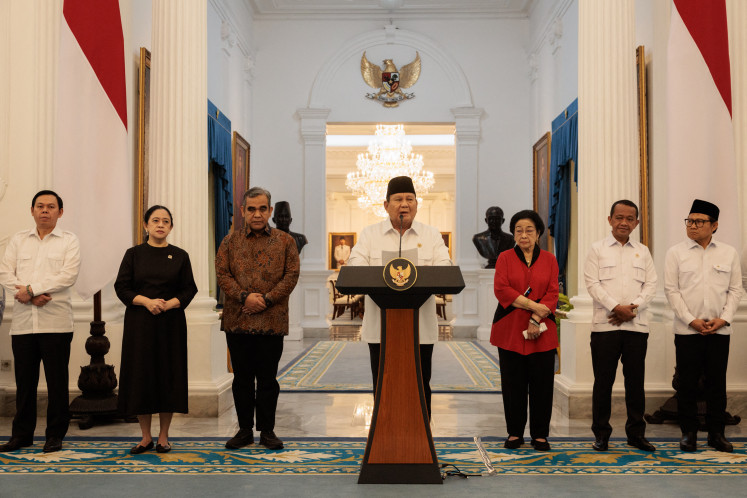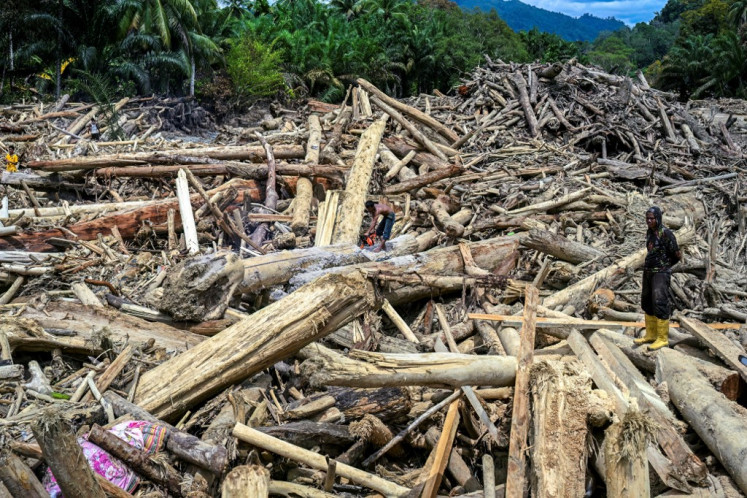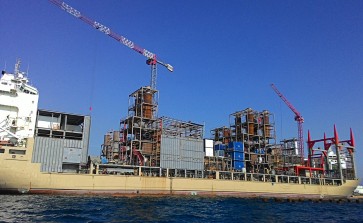Popular Reads
Top Results
Can't find what you're looking for?
View all search resultsPopular Reads
Top Results
Can't find what you're looking for?
View all search resultsIn search of affordable feed-in tariffs for green energy
Setting higher FITs for the eastern part of Indonesia is an effort to bring more IPP investment, yet the profitability of investing in this area is still in question since the electricity demand is not as high as in Java or Sumatera.
Change text size
Gift Premium Articles
to Anyone
 Power supplier -- A power barge is being constructed in a shipbuilding site in Istanbul, Turkey, in August. The Indonesian government has hired several power barges from Turkey as part of its plan to supply 540 Megawatts of electricity in all regions across the country in five years. (Courtesy of Karpowership Indonesia/File)
Power supplier -- A power barge is being constructed in a shipbuilding site in Istanbul, Turkey, in August. The Indonesian government has hired several power barges from Turkey as part of its plan to supply 540 Megawatts of electricity in all regions across the country in five years. (Courtesy of Karpowership Indonesia/File)
T
he Energy and Mineral Resources Ministry has recently issued the latest feed-in tariff (FIT) for renewable energy (RE). As one man’s disaster is another man’s delight, the new FIT makes some people happy, while others have worries.
Unlike previously when each RE’s FIT was outlined in different regulations, the latest regulation covers all FITs for all types of RE into one regulation, the Energy and Mineral Resources Minister Decree (MD) No. 12 of 2017. MD No.12/2017 sets the FIT based on business-to-business (B2B) negotiation between independent power producers (IPPs) and state-owned electricity company PLN.
The government stipulates the maximum FIT reference ranges from 85 percent up to equal to the regional PLN’s production cost (BPP). Currently the Java-Madura-Bali interconnection grid has the lowest BPP of around Rp 800 (six US cents) per kWh and Papua has the highest at around Rp 2,500, as compared to the national average BPP of Rp 1,400.
As stipulated in MD No.12/2017, if the BPP in the project location is lower than the national average, the maximum price follows the regional BPP. On the contrary, if it is higher, the maximum price follows 85 percent of the regional BPP. As a result, eastern Indonesian regions (e.g. Papua, Maluku) will have higher FITs since their current BPPs are relatively higher compared to other areas in Indonesia.
Given that the previous FITs were generally higher than the BPPs, the decree probably makes IPPs unhappy since it might threaten their business profitability. It should also be highlighted that naturally with IPPs having a lower bargaining position than PLN, the result of price negotiations will most likely favor PLN’s interest — as happened during 2006 to 2009.
These aforementioned points are in accordance with the government’s intention to reduce the current BPP in order to eventually cut retail electricity subsidies.
From our perspective, three important points can be drawn from this regulation.

















